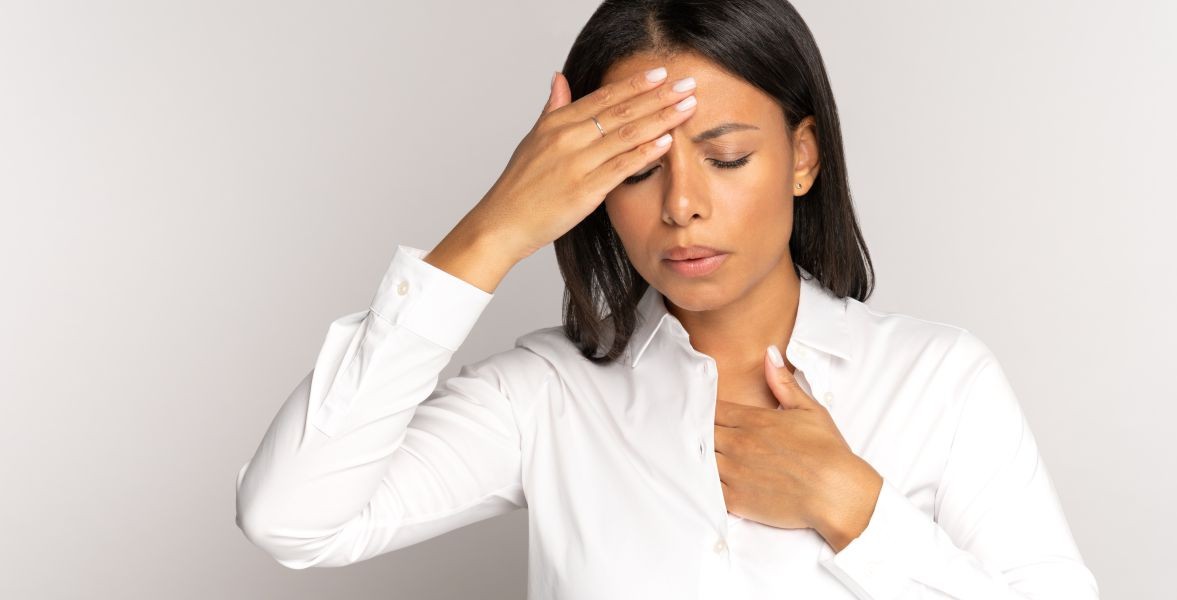
Created by - Rigomo Team
Shortness of Breath: Is it a sign of a serious disease?
Many different heart issues cause shortness of breath [SOB] or breathlessness. It may happen suddenly sometimes or bit by bit over time. It's normal to feel breathless while exercising or doing some strenuous activity. But, you should never ignore unexplained SOB, because it may indicate a severe underlying health condition. If you experience shortness of breath, please get medical aid immediately. If you've got any heart health issues, a visit to a specialist is needed for a comprehensive analysis of symptoms and signs to diagnose and treat issues.Unexplained shortness of breath could signal an underlying condition associated with the structure or function of your heart. Below is the list of serious and frequently diagnosed heart conditions which can give rise to Shortness of Breath.Coronary Artery DiseaseTwo main coronary arteries, the Left main and Right coronary arteries supply blood to the heart. These arteries could develop issues resulting in serious conditions.Coronary artery disease (CAD) is the most common heart ailment occurring due to the build-up of plaque in the walls of the coronary arteries resulting in narrowing and eventually occlusion of those arteries.These cholesterol-rich fatty deposits (plaques) decrease blood flow to the heart muscle resulting in a condition referred to as Angina and raising the danger of an attack. Symptoms might not appear till there's a major reduction in blood flow.Shortness of breath, particularly effort breathing with chest pain is seen with underlying CAD.Heart attackAn attack happens once the heart muscle doesn't receive enough blood and nutrients to perform properly. This can happen if you've got risk factors for CAD, which include diabetes, High cholesterol, smoking, and a case history of arterial blood vessel disease.While pain is the most typical symptom of an attack, other symptoms may Shortness of breath and worsening fatigue.Heart failureHeart failure is a condition when the heart is unable to pump enough blood to the organs of the body. This can be caused by either weak cardiac muscle that is simply too weak to pump enough blood to the body (heart failure with reduced ejection fraction) or a thick, stiff cardiac muscle that doesn't relax enough so that enough blood comes into the heart (heart failure with preserved ejection fraction) Shortness of breath is the most typical symptom of failure. It's a distressing feeling which will cause you to feel smothered, Shortness of breath happens with effort however could get worse and worse and eventually occur at rest in severe cases. It usually is worse lying flat on your back and patients typically get up from sleep and stay up to catch their breath.Causes of failure embrace CAD, long-standing cardiovascular disease, and weak cardiac muscle which could be hereditary or is also secondary to diseases like CAD. A weakened cardiac muscle may additionally be caused by infections that directly harm the heart (myocarditis) most notably there are multiple reports of Covid-19 inflicting myocardial inflammation and eventually resulting in heart condition and failureIt is vital that failure is diagnosed early and treated to enhance the quality of life, and cut back hospitalizations and death from failure.Cardiac arrhythmiasHeart rhythm abnormalities, conditions in which your heart either beats on an irregular basis, out of phase, too quick or too slow could give rise to shortness of breath, these conditions can be managed effectively if diagnosed early. Common symptoms like shortness of breath and giddiness need careful analysis by a specialist.Valvular heart diseaseValvular heart disease occurs when valves of the heart do not work properly. It can occur either due to valvular stenosis or valvular insufficiency.o Valvular stenosis: The tissues forming the valve leaflets become stiffer resulting in narrowing the valve opening and thereby the amount of blood that can flow through it, is reduced. If the VALVE becomes very narrow or stenosed, the function of heart is impaired and the body does not receive adequate blood and nutrients. o Valvular Insufficiency: Condition when the leaflets do not close completely, permitting blood to leak backward through the valve. This flow is also known as “regurgitant flow.”Both these valvular conditions can cause severe shortness of breath, which needs early diagnosis so that it can be managed effectively.
More detailsPublished - Fri, 26 Aug 2022
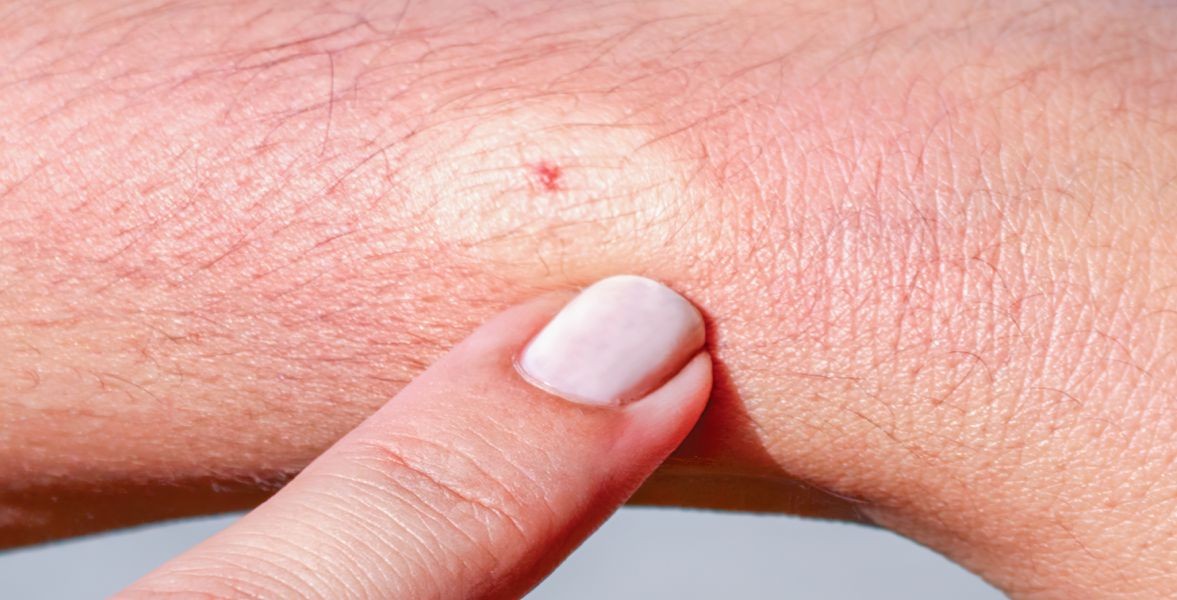
Created by - Rigomo Team
What is Bee Sting? Cause, Treatment, Symptoms, and Prevention
In extreme cases, a sting may cause a serious hypersensitivity reaction. Approximately 5-7.5% of individuals can experience severe sensitivity to insect stings in their lifetimes. In beekeepers, this risk increases to 30%. As per World Health Organization, many people reported light to moderate reactions such as localized redness and swelling after insect stings. Very few people may experience the sensitivity may be far more severe, requiring emergency medical treatment. Fatal reactions are rare.o The venom of honeybees, paper wasps, and yellow jackets tends to cause the foremost severe reactions.o Bees, wasps, and fireplace ants most typically cause general reactions that may be present everywhere in the body, together with in the skin and respiratory-system When a bee stings, sometimes, its sharp, barbed stinger remains lodged within the skin. This stinger will unharness venom at the moment when the bee has been injured.Bee venom contains proteins that affect the skin cells and system, leading to pain and swelling at the location of the sting, albeit an individual isn't allergic to the venom.In those that are allergic to bee stings, the venom triggers an additional severe systemic reaction. These individuals might not have any hypersensitivity when they are bitten for the first time but can show severe reactions to the sting a second time.If an individual is allergic, the sting can cause the system to produce a specific Immunoglobulin known as Ig (IgE). Usually, IgE protects the body from dangerous substances, like viruses and parasites.However, in response to a sting, the body produces IgE that then causes inappropriate immune responses, like hives, swelling, etc.Symptoms -The symptoms of a sting vary as per the severity of the allergy. An individual may have a Mild, moderate, or severe reaction shortly when being stung by a bee.Mild reactionThe majority of sting symptoms are delicate and don't need medical attention. They are restricted to the location of the sting itself, and include:• A sharp, burning pain• A raised, red skin• Slight swellingModerate reactionIn a person with a moderate sting reaction, the body responds strongly to bee venom. In such cases, the symptoms will take over a week to heal completelySymptoms embody severe redness around the sting and swelling around the sting, which can slowly increase in size to a diameter of up to 10 ten cm over 24–48 hoursIf an individual experiences a moderate reaction there's a 5-10% chance that they're going to develop a general sensitivity to a sting in the future.Severe sensitivityA sting will cause a serious hypersensitivity reaction that may require emergency medical treatment. The subsequent symptoms of a hypersensitivity reaction develop rapidly:• Itchy, red hives on the skin• Pale or flushed skin• A swollen throat or tongue• Difficulty breathing• Abdominal pain• Nausea and vomiting• Dizziness• A weak, thready pulse• Loss of consciousnessTreatment –The treatment for sting reaction can depend on the severity of the sensitivity.Treating a light to moderate reactiono After a sting, remove the stinger, Avoid squeezing the venom sac. It will be advisable to use tweezers to do this. Removing the stinger can limit the quantity of venom discharged into the blood.o Use an ice compress, apply steroid ointments, and take antihistamines to reduce skin sensation and inflammation.o Symptoms ought to subside over a few days.Treating a severe reactiono Severe, general reactions require a shot of Adrenalin, which can facilitate cut back the severity of the sensitivity. Doctors can also administer intravenous fluids as supportive therapy.o Adrenalin quickly reverses the symptoms of severe sensitivity. People who are prone to such severe reactions are advised to always keep an injection with themo Immediately call the emergency services and lie down with your feet elevated till you reach the hospital. Long-term treatmento Desensitization therapy may be a treatment designed to cut back a person’s sensitivity to explicit allergens. o Venom Therapy (VIT).VIT involves a course of injections of progressively high doses of bee venom. Bit by bit increasing the dose over the three years helps the system build up a tolerance to the venom.Prevention -Preventing sting allergiesThose who are allergic to bee stings should take the following precautions to cut back their risk of being injured once outdoors:• Avoiding walking in sandals or bare feet• Ensuring arms and legs are covered• Avoiding carrying an article of clothing that's brilliantly colored or includes a floral print• Avoiding wearing robust perfumes• Checking outside areas for bees and different flying insects before stepping outside
More detailsPublished - Sat, 27 Aug 2022
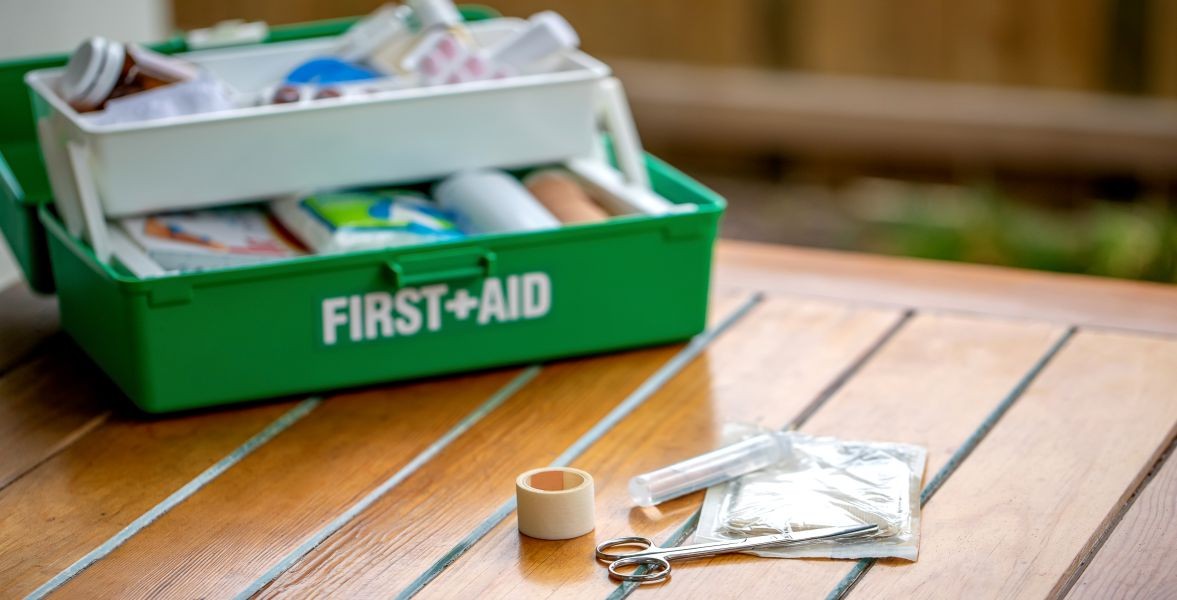
Created by - Rigomo Team
Top 10 Ingredients that are must in your first–aid box
Your first-aid box should have the final answer for common ailments. Whether or not you've got a headache, a hypersensitive reaction, a broken toenail, sustained an injury, or have suffered some burns, a few things in your first box can give you immediate relief from suffering. However, don’t simply stock it unnecessarily. You need to bear in mind to scrub and re-stock your medicines and creams time and again. Do explore the expiry dates and throw out things that have lived their life. 10 things that are essential and are supposed to be enclosed in your home aid box.1. Adhesive BandagesIt is never a good plan to keep cuts and scrapes uncovered. Thus act fast and purchase some adhesive bandages since they are available in all colors, sizes, and shapes. You may need to choose the larger ones for larger cuts, and smaller ones for shaving cuts and smaller scrapes. Also, realize vibrant ones are good for your child as they can wear with pride. 2. Antiseptic Creams and LotionsBefore you set on the bandage, you ought to clean a wound. Whereas soap and water work fine, it's best to use good antiseptic lotion to rinse out any dirt or particles within the wound that could infect it. Also, if the wound is big and or you got pus formation, you would need to clean the wound frequently and dress up the wound. Thus purchase Dettol or Savlon to kill all germs which will thrive in an open wound.3. Muscle relaxant Creams and SpraysHaving a sprain or an ache is one of the foremost common ailments folks complain of, second solely to headaches. To make sure that your aching muscles get instant relief, apply muscle creams and gels. You must use them carefully because the ingredients do get absorbed directly into your blood through the skin.4. A set of TweezersFine-tipped tweezers come in handy in numerous ways. You can easily remove foreign objects lodged within the skin like splinters. Or even simply take away your dog’s ticks with them. Make certain you sterilize the tweezers by cleaning them with antiseptic lotion.5. Sterile Gauze and TapeFor larger injuries, particularly those who square measure injury copiously, you'll want sterile gauze and medical tape to form a bigger bandage. Wherever a band-aid looks to be too tiny to hide the wound, use these two. Make the artifact with sterile gauze, apply an antiseptic cream, and canopy the wound. Then secure with the tape. These work particularly well on children and pets since they can't remove tapes easily.6. Pain RelieversWhat’s more common than a headache or backache? Having some pain relievers like Crocin and Combiflam in your first-aid box is a must. If the pain is persistent, then get it checked by a doctor, If you've got children, keep some delicate pain relievers at hand. And if you've got pets, make certain you visit your vet concerning the simplest pain pill for dogs and cats. Remember, whereas most human medicines work on dogs, a number of them are often toxic to their system. 7. AntihistaminesWith all the ever-changing weather and increasing pollution, it is very easy to get an allergic reaction From inborn reflex to getting a rash, medicine can take care of all allergies. Whereas sinus and mud allergies won't need medical attention. In severe cases, the hypersensitivity reaction medication can offer immediate relief for some time while you rush the patient to the emergency. 8. AntiFungals MedicinesIf you reside in a very hot, wet climate for any part of the year, you are more prone to getting a fungal infection. These infections can erupt anytime, anywhere. From your privates to your feet, your face, and your hands, these fungous infections are often fidgety and embarrassing. Thus make certain you've got anti-fungal cream to get relief from the persistent itch. You can get these in the form of gels, creams, powders, and even pills. 9. Nail ClippersYes, these are also on the list of top ten things to stay in a very first-aid box. You will assume that cutting your nails and shaping them is not an emergency, but what about a painful in growing toe nail? And not to mention painful hangnails which may get infected if chewed on or ripped out. Thus make certain you've got nail clippers in your first-aid box to clip nails and keep the nails clean. You may not even think that these dirty nails square measure the most important cause for fungal infections, and microorganism growths.10. Thermometers and Fever MedicationAny first-aid box is incomplete without a good thermommeter. And make certain you purchase the correct kind.. Get yourself a digital measuring instrumentFevers are very common, so do keep Crocin or basic paracetamol to make sure that you just take it to control temperature while your doctor diagnoses the cause and prescribe medications
More detailsPublished - Mon, 29 Aug 2022
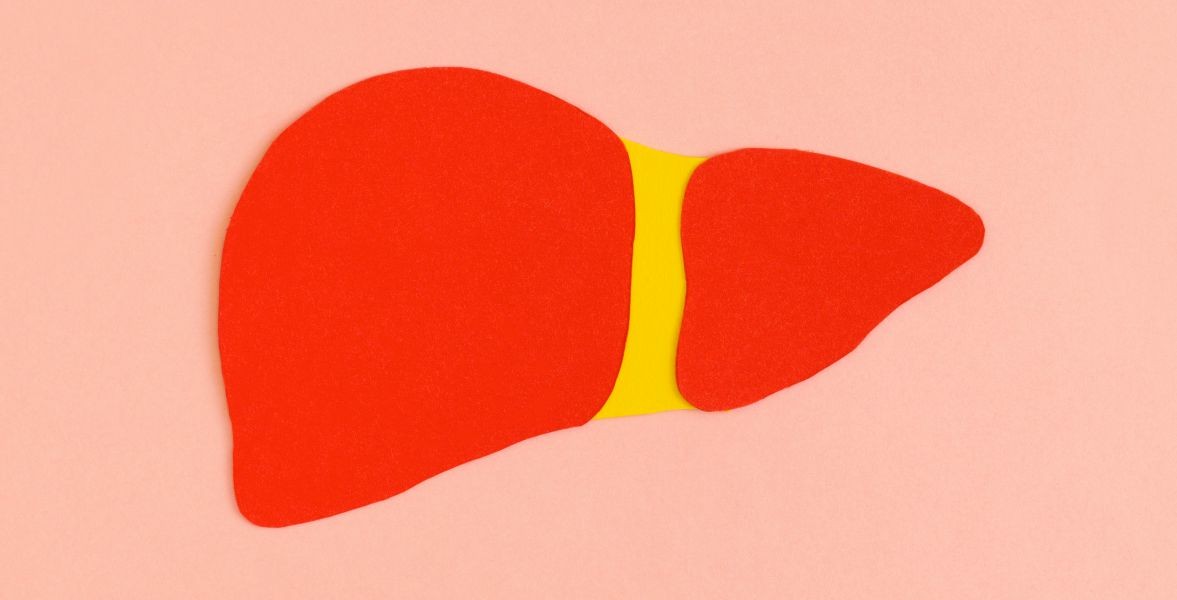
Created by - Rigomo Team
Cirrhosis – Disease, Symptoms & Cure
Cirrhosis is a late-stage liver disease during which healthy liver tissue is replaced with scar tissue and also the liver can not function properly. Many types of liver diseases and conditions injure healthy liver cells, inflicting death and inflammation. This is usually followed by cell repair which results in tissue scarring The liver disease eventually keeps the liver from operating properly. Late-stage liver disease is dangerous.Who is at higher risk of getting cirrhosis?You have a higher chance of getting the disease of the liver if you:• Abuse of alcohol for several years.• Have hepatitis.• Have diabetes• Have obesity.• use shared needles.• Have a history of liver disease.• Have unprotected sex.What are the symptoms of cirrhosis?The symptoms of sickness depend on the stage of your disease. You'll usually not have any symptoms in the early stage of the disease and even if you have some symptoms, they are generally mistaken for symptoms of the many other common diseases and sicknesses.Symptoms and signs of liver disease include:• Loss of appetite.• Feeling weak or tired.• Nausea.• Fever.• Unexpected weight loss.As liver function gets worse, then symptoms of liver disease may include:• Easy bruising and bleeding.• Jaundice.• Itchy skin.• Swelling in your legs and ankle.• Fluid buildup in your belly/abdomen (ascites).• Brownish or orange color to urine.• Light-colored stools.• Confusion, impaired thinking, amnesia, temperament changes· Blood in your stool.• Redness in the palms of your hands. What causes cirrhosis?The most common causes of liver disease of the liver are:• Alcohol abuse (an alcohol-related disease caused by chronic consumption of alcohol).• Chronic infections of the liver (hepatitis B and hepatitis C).• Fatty liver related to obesity and diabetes [not alcohol]. This condition is named non-alcoholic steatohepatitis.Is there a cure for cirrhosis of the liver?No, there's no cure for cirrhosis of the liver. The injury already done to your liver is permanent. However, counting on the underlying reason behind your liver disease, there could also be actions that can be taken to prevent liver disease from worsening. These actions include:• Stop drinking alcohol.• Treat chronic liver infections (if you have got it).• Avoid medications that stress the liver. • Eat a healthy, well-balanced, diet, like the Mediterranean diet.
More detailsPublished - Tue, 30 Aug 2022

Created by - Rigomo Team
Hemochromatosis – Symptoms, Diagnosis & Treatment
When there is too much iron builds up in the body, this condition is called Hemochromatosis. This iron-storage disease is a pathology that affects men usually than it will girls. The girls lose blood through the periods, so they are unlikely to show signs of iron-storage disease till late in life. Pathology is additionally common in individuals of Western European descent.What are the Symptoms of Hemochromatosis?The symptoms of pathology might include:o Liver issues[cirrhosis, hepatomegaly]o Joint paino Fatigueo Unexplained weight losso A darkening of the skin remarked as "bronzing"o Abdominal paino Loss of sex driveHow is hemochromatosis diagnosed and treated?Whenever pathology is suspected, a blood test is done to know the levels of iron in the blood, If excess iron is found, a genetic test(hemochromatosis deoxyribonucleic acid test) could also be ordered. And biopsy to see for excess iron in the organ [liver] is performed. The goal of treatment is to get rid of excess iron from the body, similarly to scale back any symptoms or complications that have resulted from the malady.o Therapeutic phlebotomy: Excess iron is removed from the body by a procedure referred to as phlebotomy. The procedure includes the removal of blood by using a needle and tube from the body, this is repeated every week for up to 2 or 3 years till the iron buildup has been reduced.o Chelation therapy: The medicine utilized in iron chelation medical aid is either injected or taken orally (by mouth). Injected iron chelation medical aid is done at a doctor's office. o Dietary modifications: To help keep iron levels down, individuals with pathology should strictly avoid iron supplements or food rich in iron. It is advisable to avoid alcohol. If pathology has caused liver disease, the risk of carcinoma becomes higher. That’s why screening for cancer should be performed as per a physician’s advice What Is the Prognosis for individuals with hemochromatosis?With early diagnosis and early treatment, hemochromatosis is also a manageable disease., you can live a normal, healthy life. However, complications related to the diseases are fatal.
More detailsPublished - Wed, 31 Aug 2022

Created by - Rigomo Team
Hereditary hemochromatosis – Prevention Types & Diet
Hereditary hemochromatosis disease is an autosomal recessive disorder that causes the buildup of too much iron in the body. The person inherits one HFE gene from each of the parents. If you've got a hereditary iron-storage disease, then there is a danger of developing very high iron levels. Many folks with the hereditary iron-storage disease don’t understand they need immediate treatment. Early symptoms of an iron-storage disease like feeling tired or weak, are very common and may be confused with other diseases. Men with the hereditary iron-storage disease are prone to develop complications and that too at an earlier age. It is found that about 1 in 10 men with the hereditary iron-storage disease can develop severe disease. However, most people with the hereditary iron-storage disease never develop symptoms or complications. How are you able to stop complications from hemochromatosis?If you or your members of the family have iron-storage disease, your doctor might recommend ways to lower the levels of iron in your body. The sooner iron-storage disease is diagnosed, the less seemingly you're to develop serious complications—many of which may cause permanent issues. If you're diagnosed with an iron-storage disease, frequent regular blood removal is the only way to lower the levels of iron in your body. Your doctor can also recommendo Annual blood tests to ascertain your iron levels;o Liver diagnostic test to ascertain for cirrhosis;o Iron chelation therapy, if you can't have blood removed. This involves medication taken either orally or injected to lower the levels of iron in your body;o Dietary changes, like avoiding multivitamins, ascorbic acid supplements, and iron supplements, which may increase iron in your body;o No alcohol use (because alcohol will increase the danger of liver damage); o Steps to forestall infections such as o Not eating raw fish and shellfisho Staying up to date on vaccinations, especially hepatitis B. There are four kinds of hereditary iron-storage disease, that are classified based on the age of onset and factors like genetic cause and mode of inheritance. Types Age of Onset Description Type 1 Adulthood Men [40-60 yrs of age] Women [After menopause] Type 2 Childhood By 20 yrs of age absent secretion of sex hormones delayed puberty /shortage of sex hormones in males Type 3 Intermediate between types 1 and 2 Beginning before age 30 Type 4 Adulthood Few changes need to be done to diet:1. Fruits and vegetablesGreen leafy vegetables and brightly colored fruits are jam-packed with antioxidants. Though spinach is understood for its iron content, it contains oxalates that impair non-heme iron absorption. Alternative other sources of oxalates embrace kale, rhubarb, and strawberries. Berries, plums, sweet cherries, apples, artichokes, chicory, and red onions contain polyphones that are shown to inhibit haematin iron absorption. Moreover, fruit and vegetables contain non-heme iron, which isn't absorbed well.2. Lean ProteinLean proteins like chicken, white-meat turkey, cod, mackerel, and salmon have low iron content than meat.3. Legumes, grains, nuts, seeds, and beansWhole grains, legumes, seeds, and beans, contain phytates or phytic acid, which may decrease the absorption of iron. They’re additionally high in fiber which impairs the absorption of non-heme iron. 4. EggsPhosvitin, a protein in eggs, binds to iron and helps limit the amount of iron absorbed by the body.5. TeaTea drinkers consume a chemical compound known as tannins, which is normally found in tea. As per one study, tea consumption might impair iron bioavailability. 6. Dairy foods Dairy foods like milk, cheese, and yoghurt square measure poor sources of iron. Plus, they'll decrease the iron absorption in pills and foods taken at an equivalent time.
More detailsPublished - Thu, 01 Sep 2022
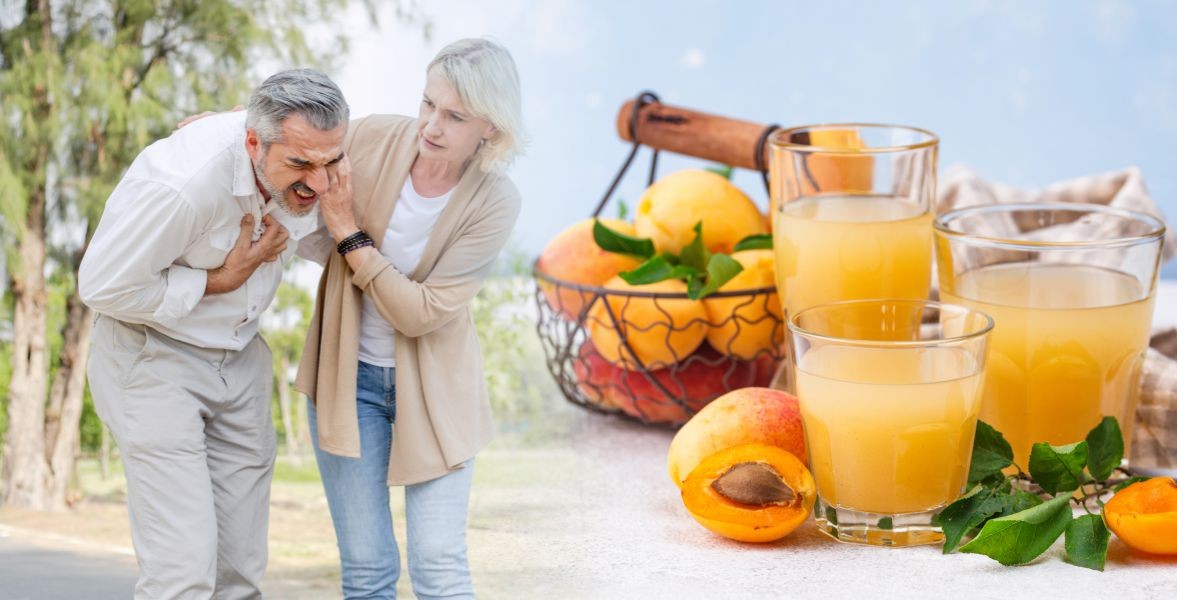
Created by - Rigomo Team
Ayurvedic remedies can prevent your unbearable Chest Pain.
Ayurveda is an ancient natural science that originated in Bharat. It acknowledges herbs as medicines and modus vivendi as it supports the healthful field. it's referred to as a natural science because it incorporates lifestyle changes along with herbal supplements/medicines to treat the patient. Ayurvedic Treatment for Chest Congestion Congestion is the accumulation of an excessive amount of secretion/fluid build-up in your lungs. This is usually caused due to an imbalance of the Vata Dosha, as per the Ayurveda principle. This congestion usually happens within the nasal /airway passages. SYMPTOMS OF CHEST CONGESTIONThe symptoms of congestion embrace a tickling sensation at the back of the throat/ nasal passages. Also, severe headaches, labored breathing, and chest discomfort. In severe cases, the patient may additionally complain of blood discharge while coughing, high fever, rashes on the skin, neck stiffness.AYURVEDIC REMEDIES FOR PHLEGM IN THE CHEST As per Vedas, several remedies will facilitate in treatment of this condition. One can drink herbal tea all day s that the anti-oxidants can facilitate flushing out all those toxins that are inflicting a painful build-up of secretion and fluids within. Also, one can use essential oil for inhalation, steaming, and even massages. Yoga and aromatherapy can be practiced for removing away with congestion. Add a pinch of salt to a glass of hot water and do a saline water gargle which can help clear the air passages. AYURVEDIC TIPS FOR CHEST CONGESTIONIf you're plagued by check congestion, Follow these ayurvedic tips to get rid of it:o Lemon & Honey Juice: Mix honey and lemon to make a juice. Drinking this mixture for 2-3 days helps in boosting immunity too. o Warm Milk: Add honey to milk to forestall chest congestion and body infections. You can also add some turmeric that has anti-bacterial properties. This can help you with the chest congestion clearance o Gargling with Hot Water: Another popularly known home remedy for chest congestion is gargling with hot water with an added pinch of salt. Gargle for 2-3 minutes for 2-3 days at least twice a day o Onion Extract: This is one very common ayurvedic remedy to treat congested chests. Extract some onion juices and add some honey and hot water. This drink helps in clearing secretion, and helps within the congested chest, drink this mixture 3-4 times each day.
More detailsPublished - Sat, 03 Sep 2022
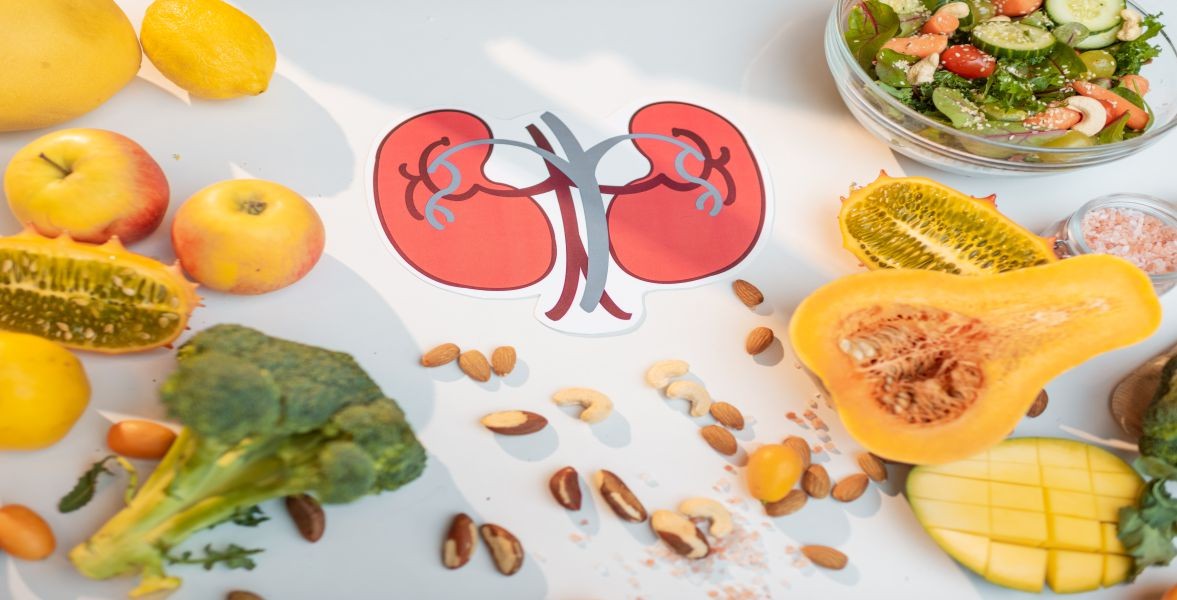
Created by - Rigomo Team
A low-protein diet is beneficial for Kidney Disease
A low-protein diet is useful for chronic kidney disease, however, few studies suggest that a vegetarian, high-soy diet could also be problematic to these patients. The potential effects embody excretory organ calcification and reduced mineral absorptionA low-protein diet may be helpful to a patient with chronic kidney disease (CKD), however, the supply of protein is also important for the body. Several clinicians assume that a vegetarian diet is superior for kidney patients; however, this may not be true. With a vegetarian diet, the patient could also be missing some probably helpful essential nutrients found primarily in animal sources. Vegetarian sources might also contain substances like phytates and that might probably damage the kidney. Patients with CKD need to consume adequate Protein to stop the body from coming into a catabolic state. However, an excessive amount of Protein can place stress on the kidneys. Since a patient could also be fighting a chronic condition for several years, a low-protein diet ought to embody enough Protein to stop frailness and at the same time shield the kidneys. For long use, a low-protein diet should not be causing a negative balance1. Red bell peppers1/2 cup serving red bell pepper = 1 mg Na, 10 mg phosphorusThese tasty vegetables also are a wonderful supply of vitamins C and A, further as pyridoxamine, vitamin B complex, and fiber. Red bell peppers are also rich in carotenoids which are antioxidants that help protects against sure cancers.2. Cabbage1/2 cup serving cabbage = 6 mg Na, 60 mg K, 9 mg phosphorusA veggie, cabbage is packed with photochemical, chemical compounds in fruit or vegetables that hack free radicals before they can cause harm. Several photochemical also are famed for shielding cells from an injury that might cause cancer.3. Cauliflower1/2 cup serving cooked cauliflower = 9 mg Na, 88 mg K, 20 mg phosphorusAnother veggie, cauliflower is high in ascorbic acid and has an honest supply of B and fiber. It’s additionally packed with indoles, glucosinolates, and thiocyanates—compounds that facilitate the liver to neutralize hepatotoxic substances that might injure cell membranes and deoxyribonucleic acid.4. Garlic1 clove garlic = 1 mg Na, 12 mg K, 4 mg phosphorusGarlic has antimicrobial properties that facilitate forestall plaque from forming on your teeth and reduce inflammation.5. Onions1/2 cup serving onion = 3 mg Na, 3 mg phosphorusOnion, a member of the genus Allium family and basic fixings in several hard-baked dishes, contains sulfur compounds that provide it its pungent smell. However, onions also contain flavonoids, particularly quercetin, a robust inhibitor that will scale back cardiopathy and shield against several cancers. 6. Apples1 medium apple with skin = 0 Na, 10 mg phosphorusApples might forestall constipation, shield against cardiomyopathy and scale back the danger of cancer. High in fiber and anti-inflammatory compounds, An apple a day keep the doctor away—good news for folks with nephrosis Keep in mind that these foods are healthy for everyone—including members of the family and friends who don't have kidney disease.
More detailsPublished - Mon, 05 Sep 2022
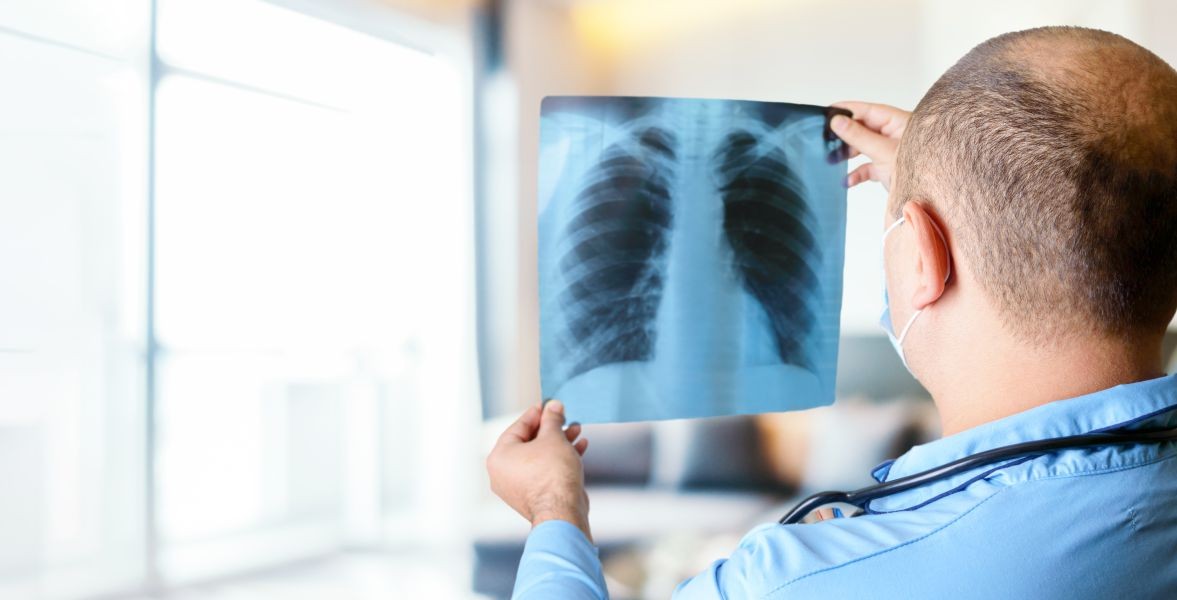
Created by - Rigomo Team
What is pulmonary embolism? Symptoms & Cause
Pulmonary Embolism occurs when there is a blockage in lung arteries by a blood clot that has come through the bloodstream from another part of the body. This restricts blood flow to the lungs and lowers the oxygen levels in the body. If a clot develops in a vein and stays there, it’s referred to as a clot. If the clot detaches from the wall of the vein and travels to a different part of your body, it’s referred to as an embolus.If PEs isn’t treated quickly, they can cause heart failure, organ damage, and even death. Who is at risk of developing a blood clot?People in danger of developing a blood clot may includeo Have been inactive or immobile for long periods because of bed rest or surgery.o A person with a personal history of o Blood clotting disorder [deep vein thrombosis (DVT) or pulmonary embolism (PE)]o Heart failure or strokeo Taking birth control pills (oral contraceptives)/hormone replacement therapyo Have a history of cancer or are receiving therapy.o Sit for prolonged periods.o Are inactive for long periods of your time such as traveling via car, train, or plane.o Are overweight/obese.o Have recently had trauma or injury to a vein, presumably a recent surgery, or fracture o Are pregnant or have given birth in the previous 6 weeksIf you've got any of those risk factors, please speak with your healthcare provider to know the steps that can be taken to scale back your risk.How serious can be Pulmonary embolism?An embolism might dissolve on its own; it's rarely fatal if diagnosed early and treated properly. However, if left untreated, it is often serious and may result in complications, as well as death. What are the symptoms of Pulmonary embolism?Symptoms of embolism vary, depending on the severity of the clot. The primary signs are typically shortness of breath and chest pains that aggravate if you exert yourself. You may cough up bloody sputum. If you've got these symptoms get medical attention quickly. Symptoms might include:-o Shortness of breatho Breathing difficulty o Chest Pain (similar to heart attack)o Cough (with/without bloody sputum), wheezing o Pale, dank, or bluish-colored skin.o Rapid heartbeat/Irregular heartbeato Rapid breathingo Sweatingo Feeling anxious o Light headedness or fainting Wheezing.If you've got any symptoms of embolism, get medical attention straight off.Treatment of Pulmonary embolism.Treatment depends on the severity of the embolism and the patient’s condition which may includeo Supportive Treatmento AnticoagulantsFor Large clotso Thrombolytic Therapyo Interventional Procedures
More detailsPublished - Wed, 07 Sep 2022
Search
Popular categories
Health and Wellness
231Skill Development
7Technology
5Community Impact
2Success story
2Creativity
1Latest blogs

DeepSchool: The Story of an Idea That Refused to Sit Still
Tue, 02 Dec 2025
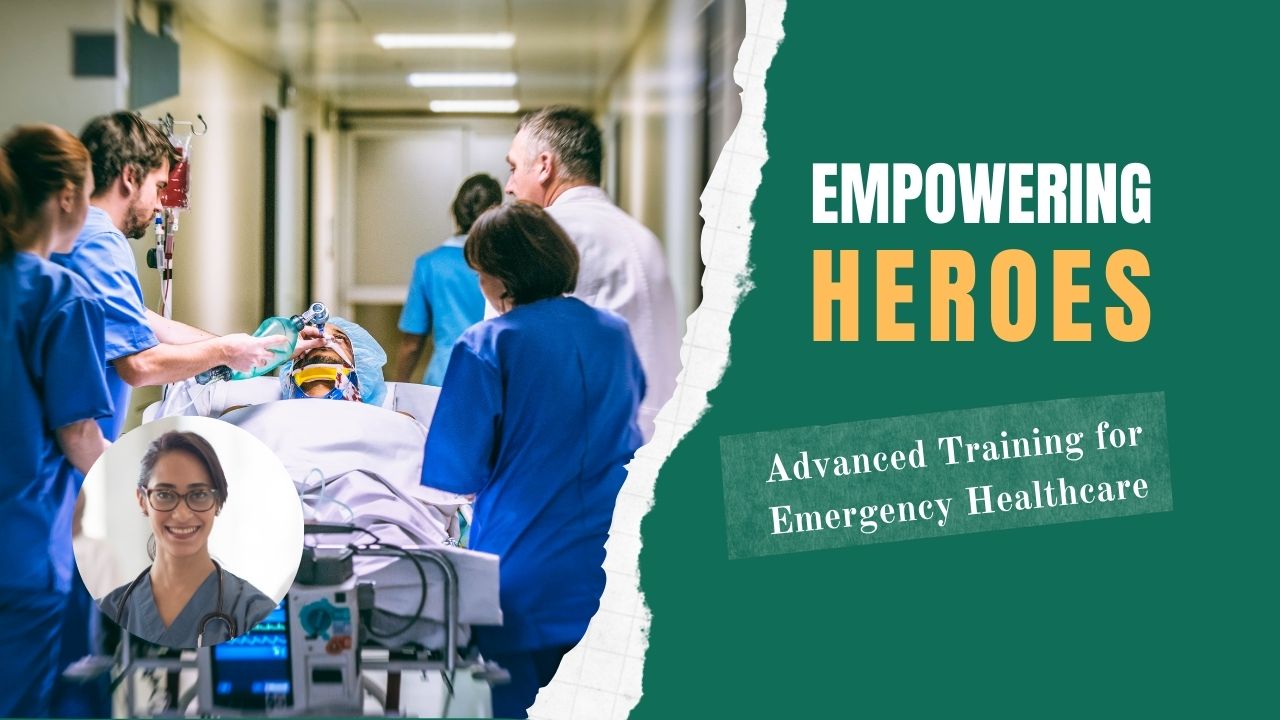
Transforming Emergency Care: The Story Behind Rigomo's Revolutionary PPMMP Course
Sun, 12 May 2024

Empowering Rural Healthcare: How Pogiko's AI is Bridging the Gap in Medical Services
Thu, 25 Apr 2024
Write a public review